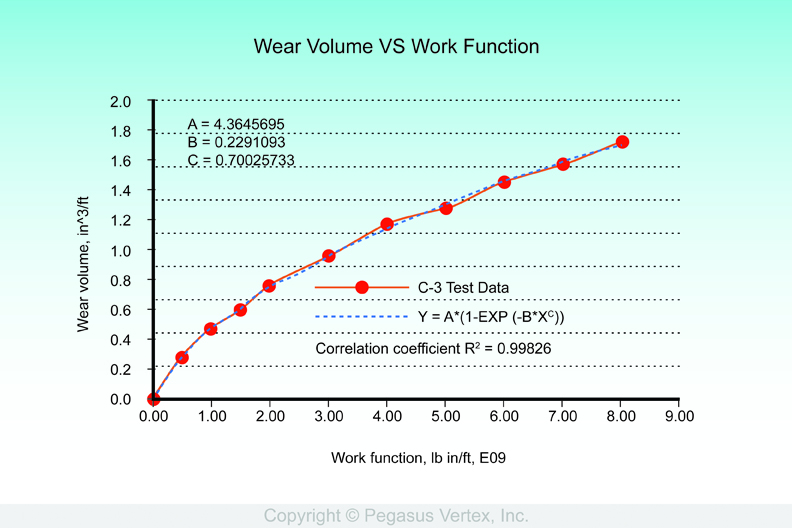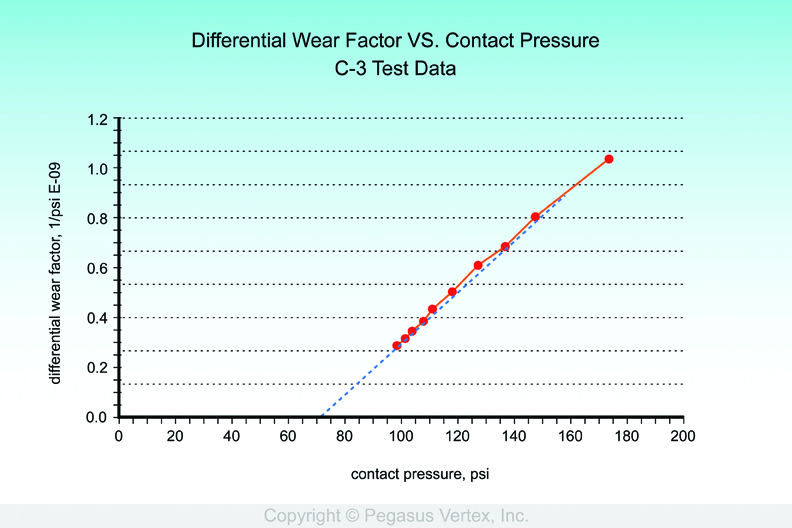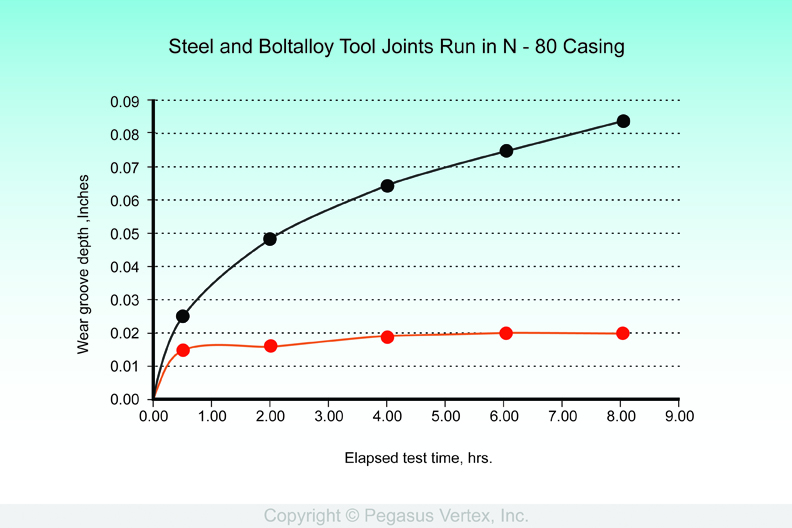Contact pressure threshold can be demonstrated using a plot of casing wear test data such as that shown in the upper curve in Figure 1. First, the plot of wear groove depth vs. elapsed test time is transformed to a function of wear groove volume vs. work function, as is shown in Figure 1.
From the relation of wear groove volume vs. work function, the differential wear factor ( the slope of the curve shown in Figure 1) as a function of contact pressure, and shown in Figure 2, can be determined.
Figure 2 clearly shows that the differential wear factor, which is the rate of casing wear, intersects the horizontal axis at 70.8 psi., and is equal to zero for contact pressures less than this value. The value (70.8, 0) is the end of the curve, and not just its intersection with the horizontal axis.
The contact pressure threshold of any casing wear system can be determined from the casing wear test data and used to establish the wear groove depth limit for this same system where the geometry differs from that used in the casing wear test. Thus, wear groove depth limits can be estimated for field operations.
If the contact pressure threshold is less than 80 psi, the wear groove depth limit will probably be greater than the thickness of the casing wall. This is the case for most tool joint/casing/drilling fluid combinations.
Some of the proprietary hardbanding samples that have been tested against N –80 casing running in water based mud have exhibited contact pressure thresholds of as much as 200 psi. and wear groove depth limits, under test conditions, of 0.02 inches.
I have not seen quantitative field data confirming the results obtainable using proprietary hardbanding materials , but the continued sales of these products is an indication that the operators are convinced that they do significantly reduce casing wear.



